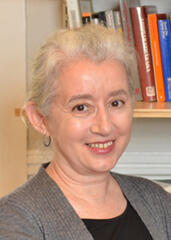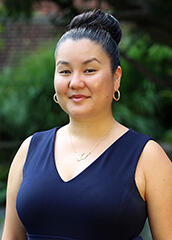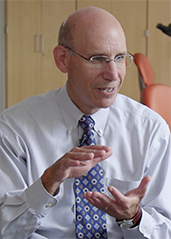Topics
- active learning (18)
- research assignments (6)
- libraries (1)
- literature-based learning (2)
- multimedia (5)
- museums (6)
- object learning (7)
- online learning (5)
- peer instruction (10)
- storytelling (2)
- learning management system (2)
- syllabus design (3)
- teaching empathy (3)
- teaching fellows (1)
- lecture (3)
- learning goals (8)
- assessment (6)
- data (3)
- backward design (3)
- blended approaches (12)
- case-based learning (8)
- classroom contracts (7)
- classrooms and space (3)
- collaborative learning (27)
- community events (1)
- course transformation (7)
- devices (3)
- learning by making (5)
- discussion (24)
- engaged scholarship (4)
- experiential learning (16)
- feedback (18)
- group work (8)
- guest speakers (7)
- interdisciplinary (6)
- leadership (3)
Send feedback
Subscribe
Copyright © 2024 The President and Fellows of Harvard College | Privacy | Accessibility | Digital Accessibility | Report Copyright Infringement

 Rebecca Nesson, Dean for Academic Programs, SEAS, and Charles R. Nesson, William F. Weld Professor of Law at Harvard Law School, Founder of the Berkman Klein Center for Internet & Society, and Principal Investigator of BKC’s
Rebecca Nesson, Dean for Academic Programs, SEAS, and Charles R. Nesson, William F. Weld Professor of Law at Harvard Law School, Founder of the Berkman Klein Center for Internet & Society, and Principal Investigator of BKC’s  Janet Gyatso, Hershey Professor of Buddhist Studies, teaches seminars on Buddhist and Tibetan intellectual history and literature at Harvard Divinity School and in the Faculty of Arts and Sciences. Gyatso aims to “cultivate an experimental and convivial atmosphere in the classroom” that encourages students to draw connections between the past and present, interrogate a diverse set of primary sources, and create a community that allows students to feel comfortable taking intellectual risks and asking questions. This is particularly important in her field, which is often unfamiliar and engages with historical contexts that may seem distant from contemporary issues. Gyatso inspires her students to draw connections between the literature, philosophy, religion, and arts of the past and contemporary conversations on topics ranging from identity to gender to climate. By encouraging students to ask questions and find links between past and present, Gyatso is able to help them find an entryway into otherwise unfamiliar topics.
Janet Gyatso, Hershey Professor of Buddhist Studies, teaches seminars on Buddhist and Tibetan intellectual history and literature at Harvard Divinity School and in the Faculty of Arts and Sciences. Gyatso aims to “cultivate an experimental and convivial atmosphere in the classroom” that encourages students to draw connections between the past and present, interrogate a diverse set of primary sources, and create a community that allows students to feel comfortable taking intellectual risks and asking questions. This is particularly important in her field, which is often unfamiliar and engages with historical contexts that may seem distant from contemporary issues. Gyatso inspires her students to draw connections between the literature, philosophy, religion, and arts of the past and contemporary conversations on topics ranging from identity to gender to climate. By encouraging students to ask questions and find links between past and present, Gyatso is able to help them find an entryway into otherwise unfamiliar topics. Aravinthan D.T. Samuel, Professor of Physics
Aravinthan D.T. Samuel, Professor of Physics Christina “V” Villarreal, Lecturer on Education and Faculty Director of the Teacher Education Program, empowers, uplifts, and nurtures communities of students every year through her popular course
Christina “V” Villarreal, Lecturer on Education and Faculty Director of the Teacher Education Program, empowers, uplifts, and nurtures communities of students every year through her popular course  Ryan Buell, Finnegan Family Associate Professor of Business Administration, leveraged
Ryan Buell, Finnegan Family Associate Professor of Business Administration, leveraged  Dr. Richard Schwartzstein, Ellen and Melvin Gordon Professor of Medicine and Medical Education,
Dr. Richard Schwartzstein, Ellen and Melvin Gordon Professor of Medicine and Medical Education,